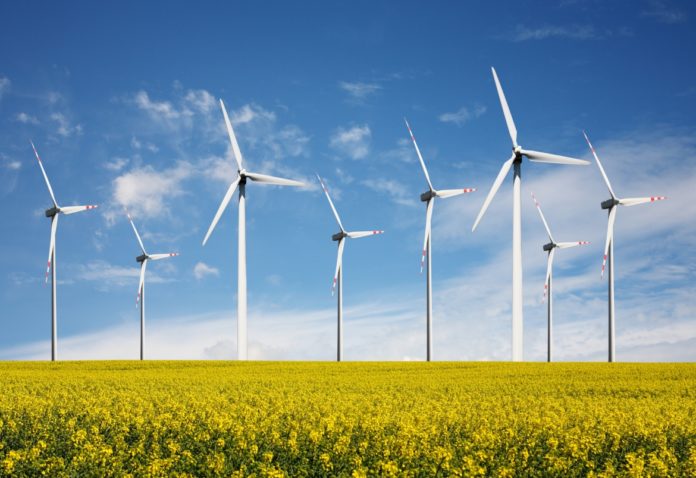(Updated to include comment from report’s authors and senator sponsoring bill putting limits on the wind industry.)
The wind industry took the offensive Monday in a battle over new regulations proposed for wind turbines, rolling out a new report showing it employs thousands and generates more than a $1 billion for communities and property owners.
A report compiled by the Polsinelli law firm ‘s energy practice showed that the wind industry contributes $1.61 billion in direct economic benefits to Kansas counties and land owners through community contributions, taxes and landowner leases.
The economic benefits cited in the report cover the 20-year life of a wind development, including $962.2 million for lease payments to landowners and $657.7 million through a combination of voluntary donations and property tax payments.
The state currently has 40 wind farms that have been built since 2001. The report credited them with creating about 8,700 construction jobs, 560 operational jobs and about 13,000 indirect or induced jobs.
The authors assessed the values of voluntary donations partly by examining payment-in-lieu of tax agreements, contribution agreements, and donation agreements from Kansas wind projects and compiled from open-records request and other public sources.
Alan Claus Anderson, vice chair of Polsinelli’s energy practice group, called wind a job creator that benefits the entire state.
“It’s not just going to Topeka, Kansas City metro, Johnson County, Wichita,” Anderson said.
“These are distributed throughout the state and are often concentrated in rural areas and those rural areas haven’t often had the same type of job growth,” he said.
The report came out hours before the Senate utilities committee held hearings on a bill that critics say threatens the state’s wind industry.
“We shouldn’t give any hesitation on stating what the bill is and that is to end wind energy development,” Anderson said.
There is a fear that the bill could signal that Kansas does not provide a stable environment for wind energy, sending projects to other states.
“The message that a bill like Senate Bill 279 sends out to these different companies is…that maybe we’re not a stable environment, maybe we are not a place you shoulld consider locating,” Anderson said.
Republican state Sen. Mike Thompson of Shawnee introduced the legislation that would impose a new series of regulations for wind turbines, including setback requirements as well as studies of sound and shadow flicker.
The bill is reminiscent of a debate that played out in 2019, when lawmakers in the House considered new setback requirements that were described as some of the most restrictive siting requirements for wind turbines in the country.
The Senate legislation was introduced in response to complaints from rural Kansas residents who complained that the state’s wind industry hurts property values, poses health risks and disrupts their overall quality of life.
Thompson said the bill is intended to protect residents who live where wind farms might locate.
Thompson said in an interview Monday he would challenge the findings contained in the report, particularly the suggestion that wind has created more than 20,000 jobs.
Thompson also said that payments-in-lieu of taxes are costing the state more in property taxes than they might otherwise receive without those agreements.
“There’s a lot more to this story than just this idea that without wind we can’t do economic development,” Thompson said.
“In fact, there’s a lot of detrimental things that are happening as a result of the wind,” he said.
The bill would give county commissioners the power to approve the construction of new wind turbines.
It also establishes new setback standards, including keeping turbines at least a mile away from the nearest property line without a turbine, at least 1 1/2 miles away from the nearest home and at least 3 miles away from an airport, park or hunting area.
The law sets new density requirements for wind turbines (no more than one per square mile) and outlaws nondisclosure agreements between energy companies and landowners during negotiations over a proposed lease.
The parties, however, could reach a mutual confidentiality agreement n the final executed lease.
The biill also enumerates in exacting detail how the sound studies are to be carried out.
It also requires an assessment that would determine the hours per year of shadow flicker that could be “perceived” at homes, schools, medical offices and other buildings within 1 mile of a turbine.
The legislation also demands that landowners be provided language — in 16-point type — that spells out their rights.
















